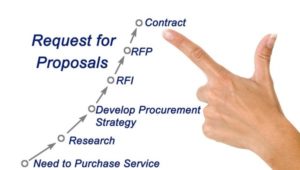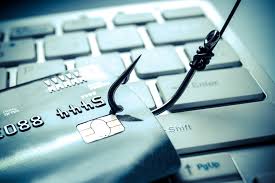
|
 |
|
PROCUREMENT EQUALS PROFITS – 5 STEP METHOD FOR RFPs
Your supply chain is the greatest source of profits in your company!
Procurement = Profits, so watch this free training.
Use RFPs for strategic sourcing to remove crisis and get best value for every dollar spent.
Click to watch this free training
A short webinar shows you the 5-step process to get more from your RFPs.
These five steps make your vision a reality, so you’re more profitable.
Defense Officials Have Different Views on Price Tag for Space Force
By Debbie Gregory.
Just how much should be budgeted to create the Space Force military branch championed by President Trump? The estimates offered up by senior defense officials are not even close.
Deputy Defense Secretary Patrick Shanahan believes the price tag will come in a “single digit, not a double-digit” billions of dollars. “It might be lower than $5” billion, he said, although he did not specify what time frame that estimate would cover.
But Air Force Secretary Heather Wilson has estimated that standing up a Space Force and a new combatant command for space warfare would cost about $13 billion over five years.
“Our cost estimate that we gave to a lot of people in the Pentagon in September was the cost of a fully-fledged, stand-alone department and also a unified combatant command,” Wilson said. “The president is going to be making some decisions to put forward a proposal in concert with his fiscal year 2020 budget proposal that will go to the Congress in February. The costs will be really based on what are the elements in the model in that proposal.”
Todd Harrison, director of defense budget analysis and senior fellow at the Center for Strategic and International Studies, estimated it would cost the Pentagon an additional $1.5 billion to $2.7 billion over five years to stand up a new service, based on the assumption that more than 96 percent of the cost would be covered from existing budget accounts within DoD. Harrison’s numbers, however, are hard to compare directly with Wilson’s because they do not include costly items that she put into her proposal, such as a Space Command and additional programs and people needed to fight rising space rivals China and Russia.
Tips to Protect your Company from Phishing Attacks
By Debbie Gregory.
Phishing is the fraudulent attempt to obtain sensitive information such as usernames, passwords and credit card details by disguising as a trustworthy entity in an electronic communication, often times directing users to enter personal information at a fake website nearly identical to the legitimate site. Spear phishing is a targeted aimed at a specific victim.
These two cyberattacks can put your business is at risk if you don’t take the proper steps to thwart them.
A phishing email will attempt to trick you into thinking it is from a legitimate, trusted source. Of course, you wouldn’t just give out passwords to a stranger, but if you think the email is from someone you trust, you might.
A spear phishing email appears to be from a very specific sender. For example, the email could look like it’s from your IT services provider, using identical colors, logo, contact name, and even an email address that’s very close to the correct email address.
So how do you spot the fakes and protect your company?
Training and educating your employees is priority one. When your staff understands what to look for to identify these scams, they will be able to avoid opening and responding to the wrong emails. Check not only the email address the email appears to come from, but also check to make sure it’s not a spoofed email address. Also, look for typos and mistakes in grammar.
Hover your mouse over any links embedded in the body of the email. If the link address looks weird, don’t click on it. Also, analyze the salutation. Legitimate businesses will often use a personal salutation with your first and last name.
Another weapon in your arsenal should be limiting administrative access to your company’s social media channels. Cybercriminals may try to get you to access a file that deploys in your system and copies your entire contact list. Then the criminals can access all of your contacts’ data, not just the company’s data.
If you can spot the irregularities in these communications, then you can avoid the scams. Start by checking. If it does not match a legitimate web presence that you can search for online, then do not open it. It’s likely a scam.
Couple, Homeless Marine Vet Face Charges in Charitable Scam
By Debbie Gregory.
We previously reported on the heartwarming story of homeless veteran Johnny Bobbitt using his last $20 to help supposedly stranded New Jersey motorist Katelyn McClure, who had run out of gas on Interstate 95 in Philadelphia.
It turns out that the story was completely fabricated, with Bobbitt, McClure and co-conspirator Mark D’Amico preying on the generosity of strangers to collect more than $400,000 to help Bobbitt get back on his feet. All three are facing criminal charges of theft by deception.
The money was collected through a GoFundMe page set up by D’Amico and McClure.
On the GoFundMe page, McClure wrote, “I wish that I could do more for this selfless man, who went out of his way just to help me that day. He is such a great guy, and talking to him each time I see him makes me want to help him more and more.” Less than an hour after the couple set up the page to solicit donations, McClure sent a text message to a friend acknowledging the story was “completely made up.”
Initially, GoFundMe spokesman Bobby Whithorne had said the company was working with law enforcement to ensure that Bobbitt got all the money raised for him. Now, the powers that be at GoFundMe are working to ensure that all monies will be returned to the donors.
Prosecutors began investigating after Bobbitt claimed he wasn’t getting the money that had been raised on his behalf. He later sued the couple.
Investigators searched the Florence, New Jersey, home of D’Amico and McClure in September in order to determine what happened to the money they raised for Bobbitt.
Although it’s not exactly clear where the money went, Bobbitt’s attorney has said it’s all gone.











